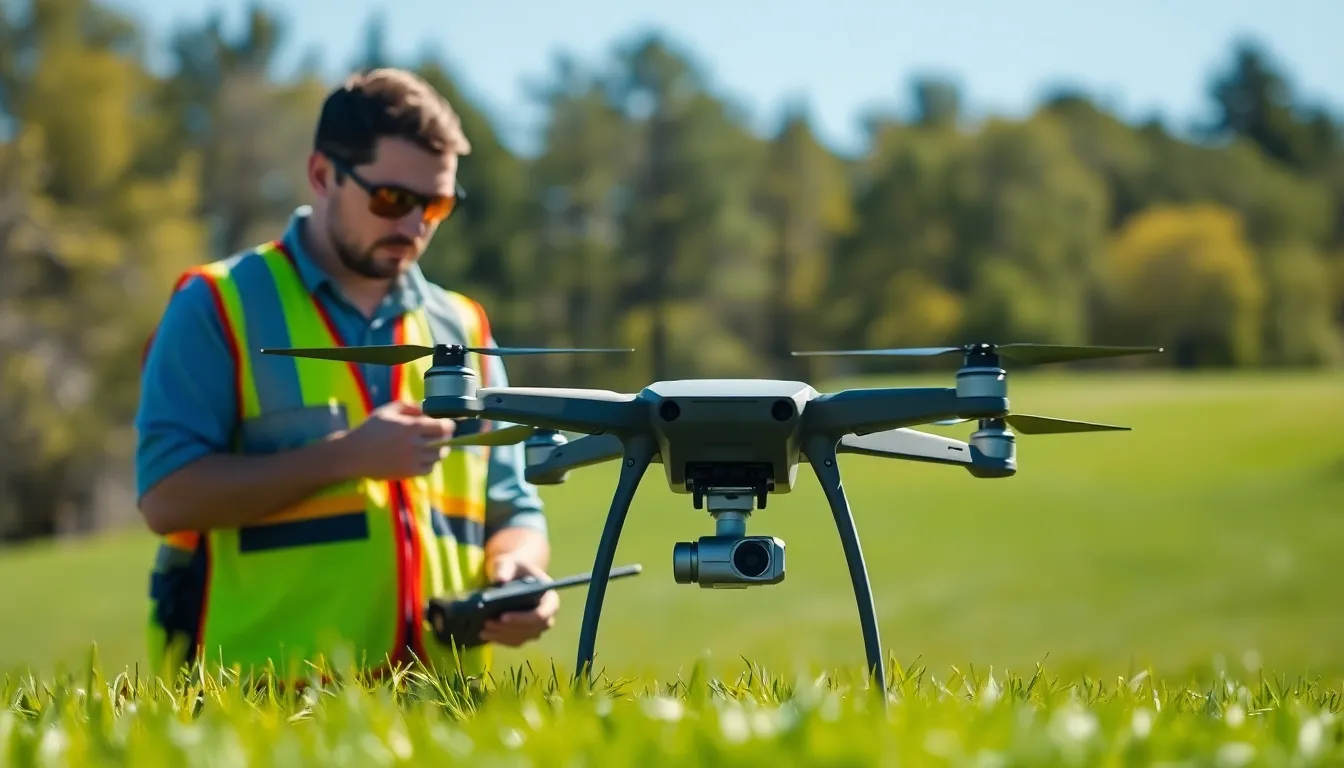As drones become an integral part of various industries, from agriculture to filmmaking, the need for drone insurance is on the rise. These versatile machines offer incredible benefits, but they also come with unique risks that can lead to significant financial loss. Understanding the importance of drone insurance can help operators protect their investments and ensure compliance with regulations.
Navigating the world of drone insurance isn’t always straightforward. Different policies cater to various needs, whether it’s liability coverage for commercial use or protection against physical damage. With the right insurance, drone operators can fly with confidence, knowing they’re safeguarded against potential mishaps. This article explores the essentials of drone insurance, helping readers make informed decisions about their coverage options.
Table of Contents
ToggleWhat Is Drone Insurance?
Drone insurance provides essential financial protection for drone operators against various risks associated with their use. Understanding its specifics helps users navigate potential liabilities and safeguard assets.
Definition and Importance
Drone insurance refers to specialized coverage designed for individuals and businesses operating drones. This insurance addresses unique risks posed by drones, such as property damage, bodily injury, and legal liabilities. It’s vital for operators to secure insurance, as incidents involving drones can result in significant financial losses and legal consequences.
Types of Drone Insurance
- Liability Insurance: Covers damages caused by the drone to third-party property or individuals. This type of insurance is crucial for protecting against claims that may arise from accidents.
- Hull Insurance: Provides coverage for physical damage to the drone itself due to accidents, crashes, or theft. This insurance ensures that repair or replacement costs are manageable.
- Payload Insurance: Protects valuable cargo carried by the drone, covering losses related to the payload in case of accidents or theft. Operators transporting sensitive items benefit from this type of coverage.
- Personal Injury Insurance: Offers protection against claims related to physical injuries inflicted on individuals as a result of drone operations. This coverage is vital for operators concerned about liability related to bodily harm.
- Data Insurance: Covers losses related to data loss or breaches associated with drone operations. As drones often capture sensitive data, this insurance provides an additional layer of protection.
Benefits of Drone Insurance

Drone insurance offers essential protection for operators, ensuring financial security against various risks associated with drone usage. Understanding its key benefits helps in making informed insurance decisions.
Protection Against Liability
Protection against liability represents a primary advantage of drone insurance. Liability insurance covers legal expenses and compensation claims arising from property damage or bodily injury caused by drone operations. For example, if a drone accidentally injures a passerby or damages a building during a flight, liability coverage mitigates the financial burden. This protection is crucial for businesses, especially those involved in aerial photography, inspections, or agriculture, where third-party interactions occur frequently.
Coverage for Equipment Damage
Coverage for equipment damage is another critical benefit of drone insurance. Hull insurance protects against loss or damage to the drone itself due to accidents, theft, or adverse weather conditions. For instance, if a drone crashes because of a technical failure or adverse weather, hull insurance aids in the repair or replacement costs. Additionally, payload insurance provides coverage for any specialized equipment attached to the drone, ensuring operators maintain operational capability even after unexpected incidents.
Factors Influencing Drone Insurance Costs
Drone insurance costs depend on various factors that guarantee coverage aligns with usage and risk levels. Understanding these aspects allows operators to choose appropriate insurance policies.
Drone Type and Usage
Drone type and intended usage significantly affect insurance costs. Commercial drones typically incur higher premiums due to their operational complexities compared to recreational models. For example:
- Multirotor Drones: Commonly used for aerial photography or inspections, these drones often require comprehensive coverage due to their higher incident rates.
- Fixed-Wing Drones: Used for mapping or surveying, these might have lower premiums, reflecting their operational stability and reduced accident risks.
- Specialized Drones: Unmanned aircraft designed for agriculture or delivery possess unique risks, prompting specialized insurance that factors into premium calculations.
Usage also influences costs. High-risk operations, such as flying over populated areas or conducting industrial inspections, may yield higher insurance premiums due to increased liability exposure.
Operator Experience and Certifications
Operator experience and certifications also play critical roles in determining drone insurance costs. Experienced operators generally possess a lower risk profile, leading to reduced premiums. For instance:
- Certified Operators: Those with FAA Part 107 certification demonstrate competency, often qualifying for discounts on their insurance policies.
- Experienced Pilots: Individuals who log numerous flight hours may receive favorable rates due to their proven safety records.
- Training Programs: Participation in formal training or specialized courses enhances an operator’s credibility and may further lower insurance costs.
Underwriters assess these elements to establish the likelihood of incidents, thus influencing overall insurance pricing.
How to Choose the Right Drone Insurance
Selecting the appropriate drone insurance requires careful consideration of individual needs and available options. A methodical approach helps ensure optimal coverage.
Assessing Your Needs
Assessing needs involves identifying specific risks associated with drone operations. Operators should consider usage frequency, environments, and types of activities performed. Evaluating the drone’s value helps determine necessary coverage limits. Understanding industry regulations also impacts insurance selection, as certain sectors might mandate specific coverage levels. Lastly, operators should identify whether they require additional coverage for specialized equipment, data, or commercial use.
Comparing Providers and Policies
Comparing providers and policies involves evaluating key factors to ensure comprehensive coverage. Operators should examine the limits and exclusions of each policy, focusing on liability and property damage coverage. Researching providers’ claim processes and customer service ratings offers insight into their reliability. Additionally, comparing premiums across multiple providers helps identify competitive rates. Reviewing customer testimonials can further guide the decision-making process. Operators should weigh the benefits of bundling drone insurance with other types of insurance, as this can yield discounts and streamline service.
Navigating the world of drone insurance is essential for operators seeking to protect their investments and ensure compliance. With the diverse range of coverage options available it’s crucial to tailor insurance policies to specific needs and risks.
By understanding the intricacies of liability coverage and equipment protection operators can mitigate potential financial losses. Comparing different providers and policies enables operators to find the best fit for their unique circumstances.
Ultimately investing in the right drone insurance not only safeguards assets but also enhances operational confidence in an increasingly competitive landscape.




